The generation at the center of marketing conversations… but not truly connecting with advertising the way many brands believe.
System1 Group has published an extensive study titled “Seeing Gen Z.” The research analyzed 1,000 ads and gathered responses from 75,000 participants. Its aim was to answer a question that has been on nearly every marketer’s mind in recent years: how does Gen Z really connect with advertising?
The findings are eye-opening.
Many of the assumptions the industry has embraced simply don’t hold up. Although Gen Z is at the center of advertising attention, its emotional connection to campaigns remains low, revealing a significant gap between what brands believe and what this audience actually feels.
Below are the key insights from the study, offering valuable guidance for marketers who want to build more meaningful and effective communication with this generation.
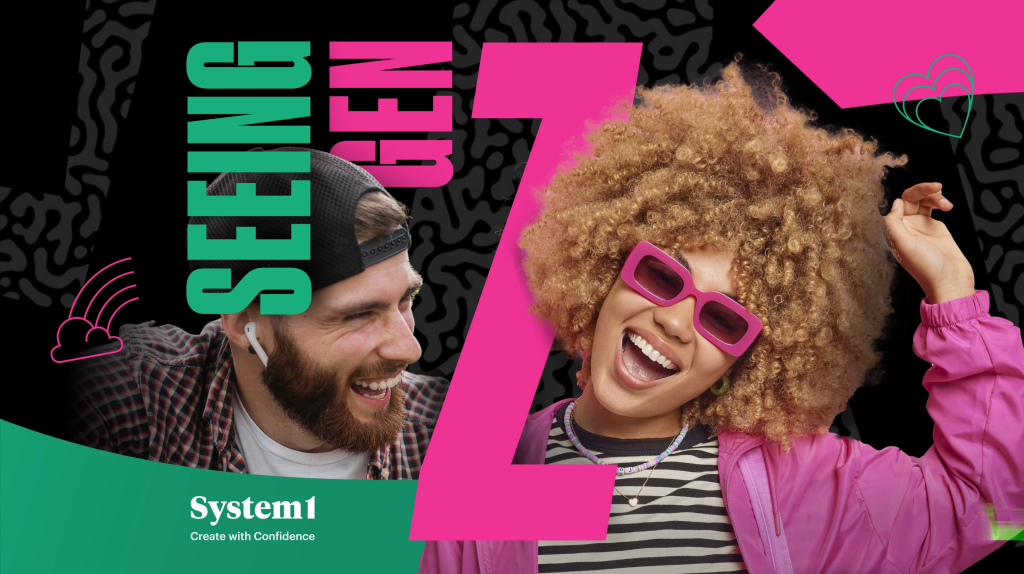
1. Marketers are overestimating Gen Z’s influence
Gen Z represents around 25% of the global population but is featured disproportionately in advertising. 78% of ads include Gen Z characters, and 35% place them in a leading role. Yet their spending power is limited, just 17% significantly lower than that of Millennials or Boomers. In reality, marketers are overinvesting in an audience that doesn’t yet have the purchasing power to match that investment. This overemphasis stems more from their cultural influence than from their economic weight.
2. A paradoxical relationship with advertising
One of the most striking findings is that Gen Z reacts less positively when they see themselves in ads. In a sample of 65 ads featuring Gen Z characters, their emotional responses were below the national average. Star Ratings, which reflect long-term impact, were down by 0.6 to 1.5 stars, while Spike Ratings, which measure short-term commercial effect, also dropped. Simply showing Gen Z on screen doesn’t create connection, largely because many of these portrayals lean on stereotypes that don’t reflect the reality of their lives.
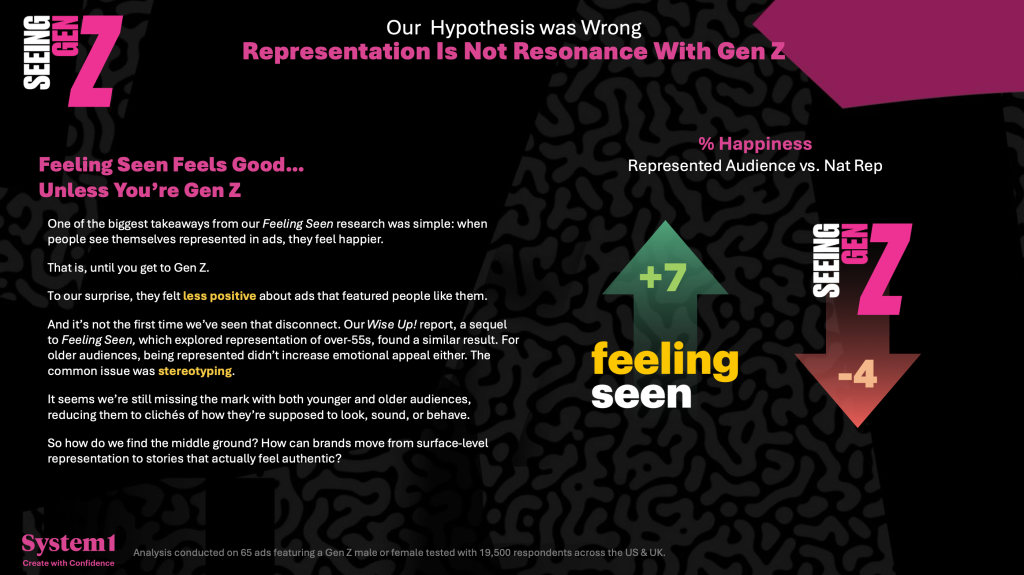
3. Present on social, absent in connection
Social media is the primary way Gen Z discovers brands. 57% learn about new brands through YouTube, 53% through TikTok, and 44% through Instagram. Yet when ads run on social platforms, their emotional impact drops sharply. Star Ratings fall to 1.7 for men and 1.4 for women, compared to 2.8 and 2.4 on TV. The takeaway is clear: platforms alone don’t build connection. Content does.
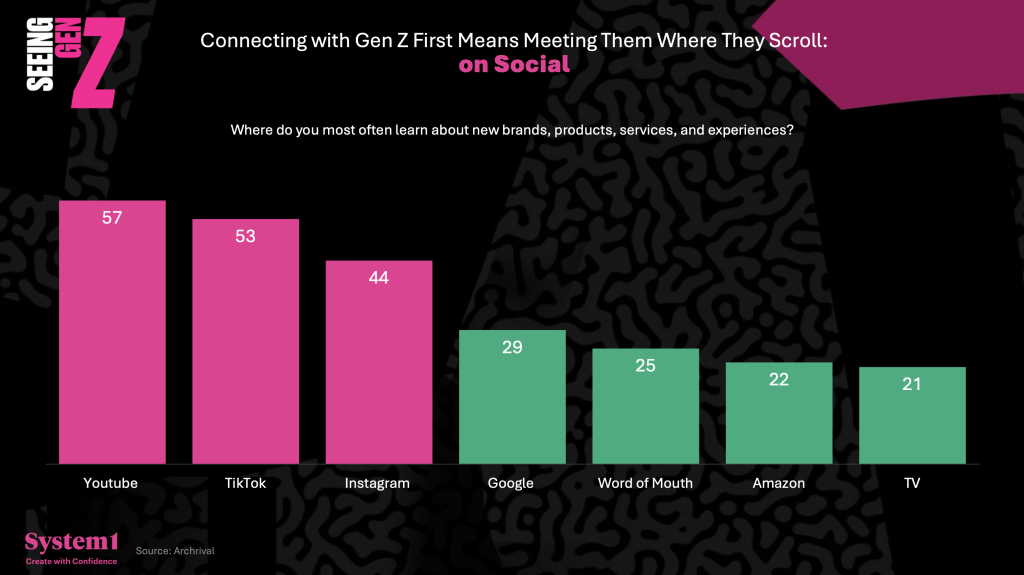
4. What really works for Gen Z
The study highlights specific creative elements that increase emotional response: stories with a beginning, middle, and end; recognizable characters; familiar settings; and hummable music. On the other hand, rapid cuts, split screens, and text-heavy visuals make connection harder and reduce effectiveness.
5. The gap between what they care about and what they see
Gen Z cares deeply about major social issues. Climate change, economic insecurity, mental health, and artificial intelligence are among their top concerns. Yet most advertising either ignores these topics or addresses them superficially. This creates a wide gap between what matters to this generation and what they’re shown.
6. There isn’t one Gen Z, there are many
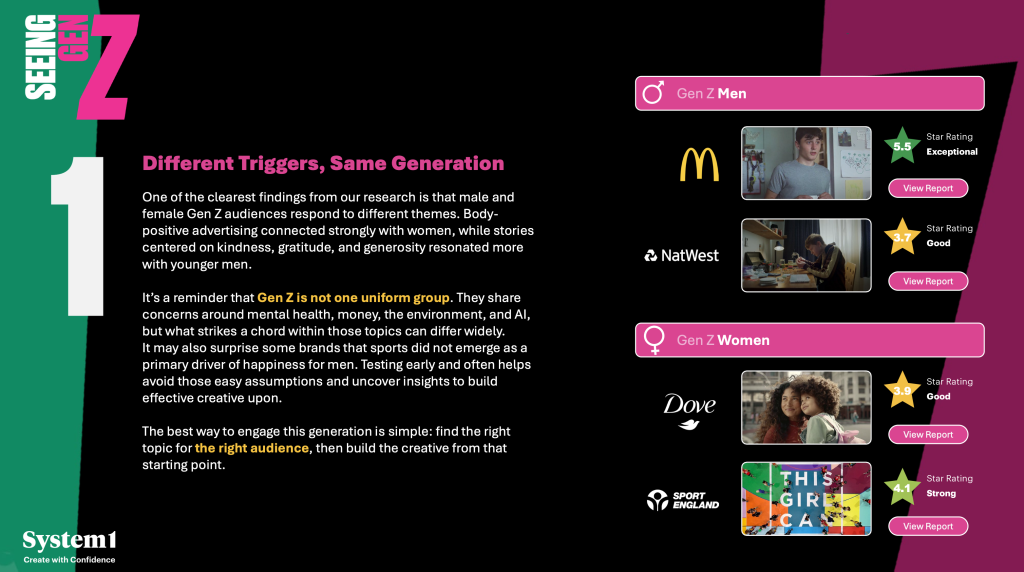
Gen Z spans ages 13 to 28, encompassing very different life experiences and perspectives. Men tend to connect more with messages around financial independence and kindness, while women respond strongly to themes of body positivity and social equality. Treating Gen Z as a single target group is a strategic mistake. Effective campaigns require micro-segmentation and tailored narratives.
7. A smile is worth ten CTAs
Although only 26% of Gen Z-focused ads use humor, when they do, emotional engagement skyrockets. Humor makes messages more memorable and strengthens brand recall. It works especially well when it draws on cultural references or nostalgic experiences that trigger positive emotions.
8. Less technology, more human experience
Ads that show Gen Z glued to screens have lower impact. Featuring phones or AI prominently is associated with Star Rating drops of 0.7 for women and 0.3 for men. When the focus shifts to real people, genuine relationships, and emotional moments, effectiveness rises significantly.
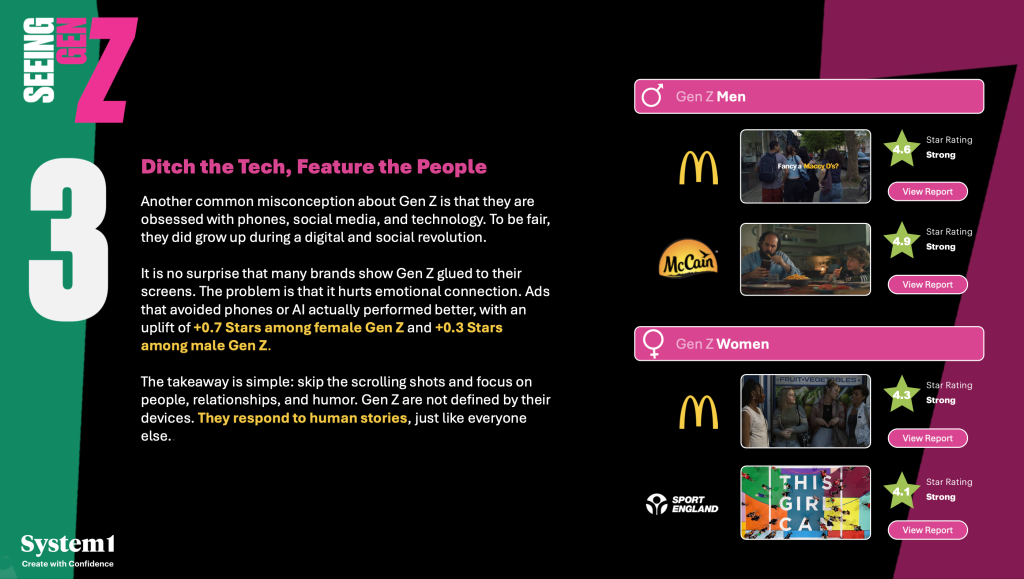
9. The value of human connection outweighs celebrity power
Ads that showcase authentic human relationships, such as family moments or intergenerational bonds, perform far better emotionally than those featuring influencers or celebrities. Gen Z connects with real stories, not shop-window faces, and this is consistently reflected in higher Star Ratings.
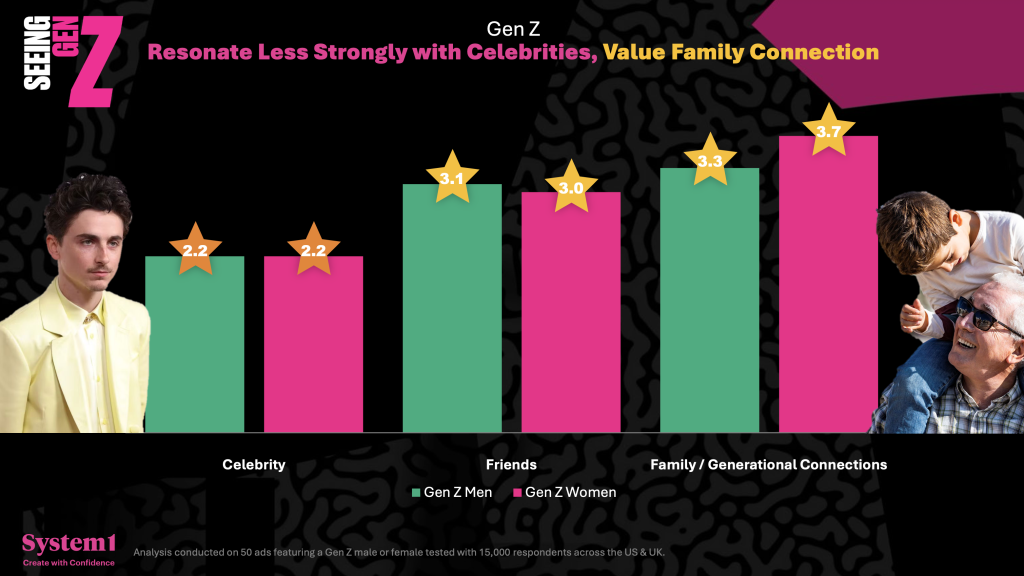
What this means for brands
Marketers need to rethink how they approach Gen Z. It’s not enough to place this generation at the center of every campaign or treat them as a single, monolithic audience. Campaigns that truly resonate are built on human stories, authenticity, emotion, and well-crafted storytelling. Humor is a powerful bridge, and focusing on real experiences is far more effective than relying on clichés about the “digital generation.”
Gen Z is not a puzzle that requires a magic formula. It’s a complex, demanding generation that responds when messages are honest, human, and meaningful. Authenticity and storytelling carry more weight than mere representation, humor builds bridges, and real experiences matter more than screens or influencers.
For brands, the solution isn’t more advertising to Gen Z. It’s better advertising. Campaigns that speak with honesty, create emotion, and stand out because they connect with people, not stereotypes.